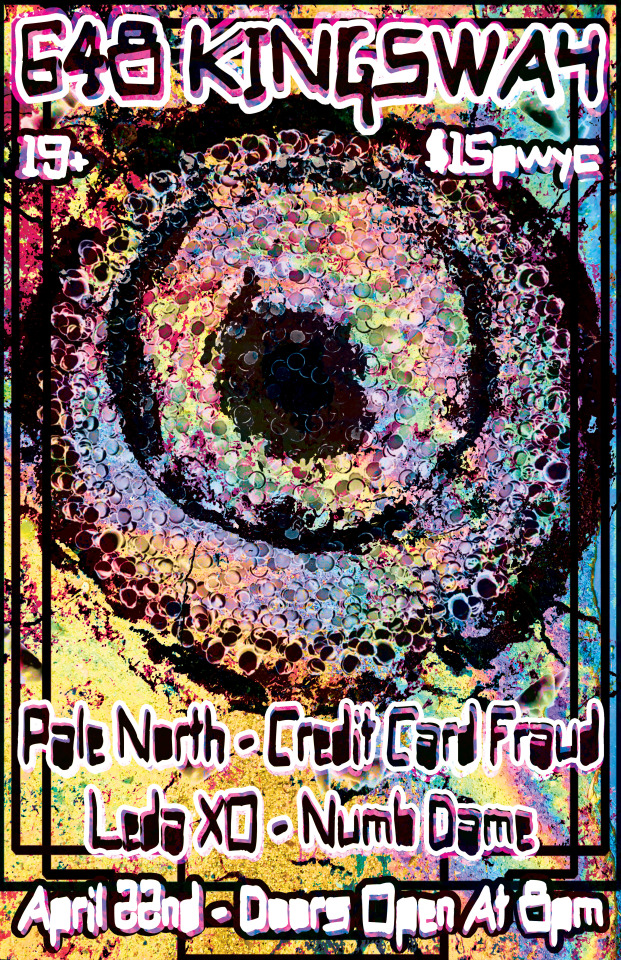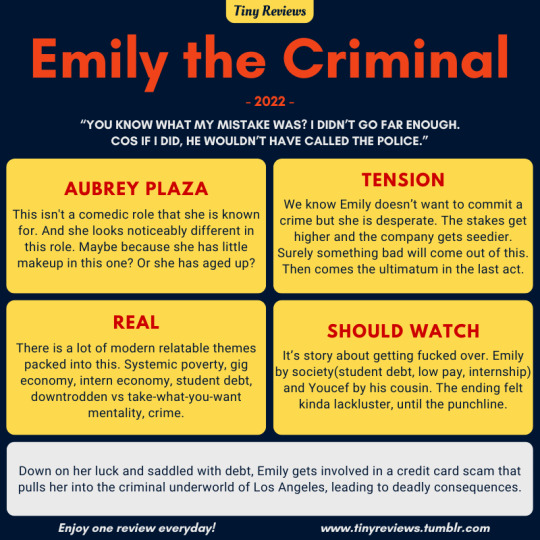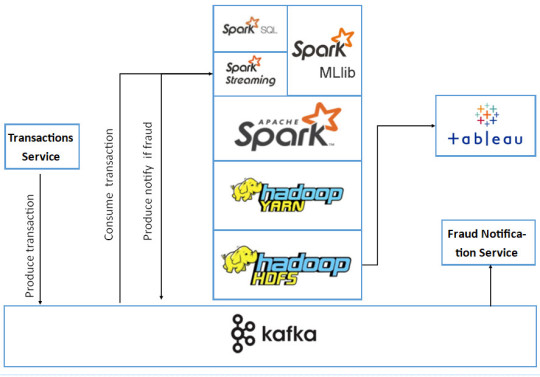#credit card fraud
Text

source 1
source 2
#destiel meme#destiel meme news#united states#us news#news#george santos#us congress#congressman#republicans#identity theft#fraud#conspiracy#wire fraud#credit card fraud
298 notes
·
View notes
Text
🤦🏽🤦🏻🤦🏾
#george santos#republicans in drag#republican assholes#maga morons#republican hypocrisy#log cabin republicans#Cameo#credit card fraud#wire fraud#check fraud#identity theft#scam artist#trump sycophant#deadbeat grifter
11 notes
·
View notes
Text
You know how when somebody steals your debit card information, they'll sometimes make a series of very small purchases to check if your card works? Like $1-$5? Somebody did that to me this weekend and I had so little money in my account that they managed to overdraft it just doing that.
Fortunately I use a credit union that won't hit me with nightmare fees for a fraudulent overdraft, and I'm housing/food secure, so instead of this being a huge deal it's an exhausting but ultimately minor annoyance. I am also mildly entertained by the thought of whoever this was going to the effort of getting my card info only to buy a couple of songs/apps/gacha pulls or whatever on the apple store and immediately running out of money. Hope you got your my money's worth, buddy.
#Snail babble#credit card fraud#debit card fraud#I don't know how they got my info but I hope the cost was somehow greater than what they got out of it#you snag my wallet and the moths that fly out start nibbling on the dollar bills in your wallet#it's probably related to the hospital where I had a major surgery getting all their supposedly secure client information stolen#including HIPAA protected info#because of their incredibly careless data handling practices#there was a class action lawsuit over it but all I got out of it was free use of a credit score checking program#I've changed my card info since then but I had 0 cases of identity theft before that happened and I've had 3 since then#it's actually kind of terrifying if I think about it for too long#because there's a strong possibility the people who stole that info were specifically targeting trans patients
3 notes
·
View notes
Text



I'll be visiting a good friend of mine for the first time in person at the end of spring all the way in Vancouver, I'm very excited. Part of the deal for getting me there since its a really expensive trip was that in exchange for making this poster for the show said friend is organizing.
Really fucking proud of this poster re-iginited my art making passion this year properly and I'm really happy to share it finally. I think this came out absolutely amazing happy i can share i publicly now. fun fact is that except for two photos the majority of the pictures used in this collage were taken in my room
If you're curious about the show and are in the Vancouver area stop by! heres some information from the organizer:
https://twitter.com/hello_nish/status/1643036296024297472?t=Y5I8HXleQJc_m3R-vORS_Q&s=19
#poster#show poster#archive incorporated#digitalstuff#photo graphy#word art#digital art#collage art#pale north#credit card fraud#leda xo#numb dame
14 notes
·
View notes
Text
Rep. George Santos orchestrated a 2017 credit card skimming operation in Seattle, the man who was convicted of the fraud and deported to Brazil said in a sworn declaration submitted to federal authorities Wednesday.
“I am coming forward today to declare that the person in charge of the crime of credit card fraud when I was arrested was George Santos / Anthony Devolder,” Gustavo Ribeiro Trelha wrote in the declaration. It was sent by express mail and email to the FBI, the U.S. Secret Service New York office and the U.S. Attorney’s Office in the Eastern District of New York, according to a copy of the receipt from the United States Postal Service.
Telha decided to contact law enforcement officials after seeing the newly minted congressman on television, he said in the declaration.
Santos, whose full name is George Anthony Devolder Santos, often went by Anthony Devolder before his first congressional bid in 2020. The New York Republican won a Long Island swing district last November after lying on the campaign trail about his education, work experience and supposed Jewish ancestry. The House ethics panel initiated an investigation into Santos last week to explore possible “unlawful activity” related to his run. State, federal and Brazilian authorities are also probing Santos related to a string of potential financial crimes. Santos has admitted to “embellishing” parts of his background, but said he never broke any laws.
He was previously questioned about the Seattle scheme by investigators for the U.S. Secret Service, CBS News has reported. He was never charged, but the investigation remains open. Santos also told an attorney friend he was “an informant” in the fraud case. Trelha insists he was its mastermind.
“Santos taught me how to skim card information and how to clone cards. He gave me all the materials and taught me how to put skimming devices and cameras on ATM machines,” Trelha said in the declaration that was submitted to authorities by his New York attorney, Mark Demetropoulos. POLITICO obtained a copy of the declaration.
Spokespeople for the FBI did not return messages. Representatives for the Secret Service and the U.S. Attorney’s Office declined to comment.
A lawyer for Santos also did not respond to emails and text messages for comment.
Trelha and Santos met in the fall of 2016 on a Facebook group for Brazilians living in Orlando, Fla., he said in the declaration and in an interview with POLITICO. By November, Trelha had rented a room in Santos’ Winter Park, Fla., apartment, according to a copy of the lease viewed by POLITICO.
“That is when and where I learned from him how to clone ATM and credit cards,” Trelha wrote in the declaration that was translated from his native Portuguese.
Santos kept a warehouse on Kirkman Road in Orlando to store the skimming equipment, according to the declaration.
“He had a lot of material — parts, printers, blank ATM and credit cards to be painted and engraved with stolen account and personal information.”
“Santos gave me at his warehouse, some of the parts to illegally skim credit card information. Right after he gave me the card skimming and cloning machines, he taught me how to use them,” Trelha wrote.
Trelha then flew out to Seattle where he was caught on a security camera removing a skimming device from a Chase ATM on Pike Street, according to law enforcement records. He was arrested on April 27.
A spokesperson for the U.S. Attorney’s Office in Seattle previously told POLITICO it’s not unusual for credit card thieves to go far from home to nab numbers so there’s less chance of the stolen numbers being traced back to the perpetrators. That spokesperson, Emily Langlie, said she didn’t have any information about Santos’ involvement in the Trelha case.
At the time of his arrest, Trelha had a fake Brazilian ID card and 10 suspected fraudulent cards in his hotel room, according to police documents. An empty FedEx package police found in his rental car was sent from the Winter Park unit he shared with Santos.
Trelha told federal authorities in the declaration Wednesday that his “deal with Santos was 50% for him and 50% for me.”
“We used a computer to be able to download the information on the pieces. We also used an external hard drive to save the filming, because the skimmer took the information from the card, and the camera took the password,” he wrote.
“It didn’t work out so well, because I was arrested,” he admitted.
Trelha said Santos visited him in jail in Seattle, but told him not to implicate him in the scheme.
“Santos threatened my friends in Florida that I must not say that he was my boss,” he wrote.
Trelha agreed to say he was working for someone in Brazil and not with Santos, because he was worried Santos would have his friends in Orlando deported, he said in a telephone interview last month. Trelha recalled Santos warning he could “make things worse for him” since he was already in jail and Santos was a U.S. citizen.
In an audio recording of Trelha’s May 15, 2017 arraignment in King County Superior Court, Santos tells the judge he’s a “family friend” who was there to secure a local Airbnb if the defendant was released on bail.
Santos also claimed to the Judge he worked for Goldman Sachs in New York, a key part of his campaign biography he later admitted wasn’t true.
Trehla was unable to post the $75,000 bail. He pleaded guilty to felony access device fraud, served seven months in jail and was deported to Brazil in early 2018.
“Santos did not help me to get out of jail. He also stole the money that I had collected for my bail,” Trelha told federal investigators in the declaration.
Trelha told POLITICO that before flying to Seattle, Santos had traveled to Orlando to pick up $20,000 in cash he instructed Leide Oliveira Santos, another roommate, to give him from a safe. Santos had promised to hire El Chapo’s lawyer for Trelha, he said. A third roommate in the Winter Park apartment told POLITICO in a phone interview that Oliveira Santos told him Santos had come to get money for Trelha. The third roommate spoke on condition of anonymity because he was in the country as an undocumented immigrant.
But Trelha never heard from Santos after Santos visited him in Seattle, the third roommate said. He later learned from Oliveira Santos that her attempts to contact Santos over the next few months were futile.
Trelha realized he had been conned, he said, when no lawyer appeared — let alone El Chapo’s.
But he still didn’t want to name Santos as a co-conspirator, fearing retaliation against Oliveira Santos, who was also an undocumented immigrant, he said.
Trelha told the federal authorities in the declaration that he had witnesses to support his statements. Oliveira Santos declined to discuss the matter with POLITICO.
“I am available to speak with any American government investigator,” Trelha wrote before providing his email address and cellular phone number and attesting that he signed the declaration “willingly and truthfully.”
A federal prosecutor who handled Trelha’s case described the scheme as “sophisticated,” adding that the Seattle portion was only “the tip of the iceberg,” according to court records reported by CBS News. But a person close to the investigation who is not authorized to speak publicly said they saw no evidence that prosecutors did forensic reports on Trelha’s phone or seemed motivated to pursue international co-conspirators.
#us politics#news#republicans#conservatives#gop#gop policy#credit card fraud#rep. george santos#george santos should resign#george santos probe#Anthony Devolder#Gustavo Ribeiro Trelha#Brazil#us secret service#fbi#Eastern District of New York Attorney's office#cbs news#politico#Mark Demetropoulos#florida#Washington#Seattle#orlando#Leide Oliveira Santos#2023#2017
9 notes
·
View notes
Text
So, my Amazon account was hacked. The email and password was change so I no longer have access to it. All of my cards were saved on it including my Amazon credit card, which they spent about $1000 on. I tried calling Chase Bank to dispute the charges, but they said since Amazon isn’t a suspicious seller my claim would probably get denied and to dispute them through Amazon instead. However, I cannot dispute it through Amazon because I do not have access to the account. I’ve tried to call many many many times to regain access and to dispute the charges, but every single person I speak to either hangs up on me or just is the exact opposite of helpful. I don’t know what to do anymore and I’m currently crying my eyes out.
#Amazon#Amazon is fucking terrible#Amazon help#hacker help#is there a way I can reverse hack my account because I’m tired of this going back and forth#someone please help me#i want to die#please#banks suck#banks are terrible#credit card fraud#fraud
14 notes
·
View notes
Text
Starting Christmas Eve off right with fraud on my credit card! 🤪
3 notes
·
View notes
Photo

The movie seems real on so many levels. The ending is surprisingly good as well. It’s the kind of story that makes you think long after it’s finished.
Emily the Criminal is a 2022 American crime drama film written and directed by John Patton Ford. It stars Aubrey Plaza, Theo Rossi, Megalyn Echikunwoke and Gina Gershon.
#emily the criminal#aubrey plaza#theo rossi#megalyn echikunwoke#gina gershon#crime drama#thriller#poverty#student debt#credit card fraud#movie review#2022
3 notes
·
View notes
Text

Are you worried about the security of your pension? Watch Your Pocket is here to help safeguard your retirement funds from the threat of pension fraud. With the rise in financial scams targeting retirees, it's more important than ever to stay informed and protected.
0 notes
Text
Fraud and Money Recovery Services
In the fast-paced world of international commerce, fraud can strike unexpectedly, leaving individuals and businesses grappling with financial losses. AIO Legal Services understands the gravity of such situations and stands ready to provide comprehensive fraud and money recovery services tailored to recover what’s rightfully owned by our clients. We offer a wide range of money recovery services,…

View On WordPress
#bank fraud#credit card fraud#cyber fraud#cybercrime#cybersecurity#Data breach#email scam#financial fraud#fraud#fraudulent activities#fraudulent behavior#fraudulent charges#fraudulent claims#fraudulent communication.#fraudulent documentation#fraudulent emails#fraudulent invoices#fraudulent manipulation#fraudulent practices#fraudulent schemes#fraudulent transactions#fraudulent transfers#fraudulent websites#fraudulent withdrawals#identity fraud#identity theft#internet fraud#online fraud#online scam#online security
0 notes
Text
i will never understand why more people in their 80s don't commit felonies. you reach that age and surely there's something illegal you always wanted to do but didn't bc Consequences
dammit, GO FORTH GRANNIES!!! rob an armored car! hold up that bank! tunnel your way into fort knox! what are they gonna do, sentence you to 20 years? good fuckin luck with that
#mine would be a coordinated museum heist utilizing the lifetimes of experience and diverse expertise of my fellow nursing home residents#also there's Karl the orderly. his skill is he drives the shuttle van#technically he shouldn't be enabling us but he thinks it's a good enrichment activity#heck debra hasn't been this excited since her son flew in from australia.#plus Karl figures formulating an elaborate heist is better brain exercise than the puzzle books they keep in the resident lounge#all the sudokus are half finished anyway#update: upon consideration my second choice is just. MASSIVE credit card fraud.
17K notes
·
View notes
Text

#shitpost#art#artwork#illustration#digital art#drawing#credit card fraud#autodesk sketchbook#sketchbook#sketchbook pro
1 note
·
View note
Text
Cyber Monday fraud prevention tips 2023; CyberTalk.org
New Post has been published on https://thedigitalinsider.com/cyber-monday-fraud-prevention-tips-2023-cybertalk-org/
Cyber Monday fraud prevention tips 2023; CyberTalk.org


EXECUTIVE SUMMARY:
Excited about stocking up on everyday home essentials, epic electronics or must-have fitness gear? This November 27th, Cyber Monday will be the season’s second-major shopping event, second-only to Black Friday, with mega-sales and deep discounts that are accessible from the comfort of your couch.
Founded by the National Retail Federation in 2005, Cyber Monday was originally intended to promote online-only deals, in an effort to reduce in-store Black Friday foot-traffic. However, due to an uptick in e-commerce, both commercial holidays are now intertwined. Whether you shop on Black Friday, Cyber Monday or both, it pays to be a cyber savvy consumer.
In 2022, nearly 20% of U.S. online retail transactions that occurred between Thanksgiving and Cyber Monday were fraudulent. Americans lost more than $337 million dollars, according to the U.S. Federal Bureau of Investigation. Cyber awareness and vigilance pays – Obviously, nothing beats spending the holiday season on-hold with your bank’s fraud department (just kidding).
6 Cyber Monday fraud prevention tips
This season, proactively prevent fraud.
1. Stay savvy when it comes to scams. Take a moment to review the latest holiday scam tactics. For instance, some scammers may set up fake online stores and send you emails advertising slashed prices on popular goods. Top Cyber Monday scams include those related to fake websites, gift cards, multi-factor authentication phishing, and fake charities.
2. Shop from a secure connection. Ensure that your computer or phone is protected by antivirus software. Otherwise, the risk of accidentally downloading malware increases. Avoid making purchases from cafes or other public spaces, as cyber schemers could intercept public Wi-Fi communications or ‘shoulder surf.’
3. Only shop on secure sites. Regardless of whether you’re browsing sites belonging to well-known retailers or smaller vendors, verify that the web page you’re visiting is legitimate. Here’s how: When visiting any website, look for the little lock icon in the top left corner of your browser bar. Also, be sure that you see HTTPS in the browser bar.
While there is no single solution that can help everyone easily distinguish fraudulent websites from legitimate ones, and cyber criminals can imitate both the lock icon and HTTPS, other means of site verification include checking for domain misspellings, and accessing sites by searching for them on Google, rather than by clicking on links embedded within emails.
4. Strive for strong passwords. If you create accounts with retailers to streamline and simplify the shopping process, be sure to protect the account with a strong password. Cyber criminals may employ tactics like password spraying to steal credit card numbers, but a strong password can help protect you from this type of cyber threat.
5. Consider credit over debt. If concerned about online retail security, consider making purchases with a credit card rather than a debt card. The advantage of using a credit card is that real money never leaves your bank account. In addition, credit card fraud may be easier to resolve than debt card fraud, for which you could be on the hook for a larger portion of the stolen funds.
6. Post-holiday shopping fraud review. After you’ve completed your shopping for the season, take a few minutes to review your bank and credit card transactions. Glance at your transactions daily or every few days. Ensure that amounts are correct. Look for fraudulent transactions. Should you identify any unknown purchases or obvious fraud incidents, contact your card service provider as soon as possible.
Further information
If you’re concerned about the legitimacy of a site, an advertisement, otherwise suspect malicious intent, you might want to pass on that bargain and instead tell yourself that you’ll look forward to future buying opportunities. It beats contending with bureaucracy and bank fraud.
Lastly, prior to starting your Cyber Monday shopping, take a few minutes to ensure that your web browser, antivirus and operating systems are up-to-date.
Learn more about advanced security solutions here. Discover timely trends, expert analysis, premium business whitepapers, and so much more when you subscribe to the CyberTalk.org newsletter.
#2022#2023#Accounts#advertising#Analysis#antivirus#authentication#awareness#beats#Black Friday#browser#Business#Commerce#communications#computer#credit card#credit card fraud#cyber#cyber awareness#cyber criminals#Cyber Monday#Cyber Monday Safety#cyber security awareness#cyber threat#deals#E-Commerce#Electronics#epic#factor#fraud
0 notes
Text
youtube
"🚨 Explosive Scandal Unveiled! 🚨
Join us in our latest video as we unravel the gripping political drama surrounding New York Republican Congressman George Santos.
🔍 Dive deep into the allegations and charges against Santos. 🔥 Witness the political ramifications and heated debates. 💬 Hear from Santos himself as he responds to the allegations. 🔮 Speculate on what's next in this unfolding controversy.
This is one video you can't afford to miss if you're a political enthusiast! Watch now for all the details and be part of the conversation.
#united states#youtube explained#youtube#george santos#US House of Representatives#political scandals#political drama#credit card fraud#nick lalota#democratic party#kevin mccarthy#Youtube
0 notes
Text
Leveraging Machine Learning for Credit Card Fraud Detection
Introduction to Credit Card Fraud
Credit card fraud refers to unauthorized transactions made using a person's credit card information. The consequences can be dire, leading to financial losses for consumers, banks, and merchants. Traditional fraud detection systems often rely on rule-based algorithms, which can be rigid and slow to adapt to emerging fraud patterns.
Machine Learning: A New Paradigm
Machine learning offers a dynamic and flexible solution. By learning from historical data, machine learning models can identify complex patterns indicative of fraudulent activity. Unlike rule-based systems, machine learning constantly evolves, adapting to new fraud tactics.
Building a Fraud Detection System
Data Collection and Preprocessing
The foundation of any machine learning model is the data. In the context of fraud detection, this includes transaction details like amount, time, location, and merchant information. Preprocessing includes handling missing values, scaling features, and transforming variables to ensure that the data is ready for modeling.
Exploratory Data Analysis (EDA)
EDA involves understanding the data's structure, distribution, and relationships. Visualization tools like histograms, scatter plots, and correlation matrices provide valuable insights. One common challenge in fraud detection is the imbalance between fraudulent and legitimate transactions, often requiring special handling.
Modelling
Various algorithms can be employed, including Logistic Regression, Decision Trees, Random Forests, and Neural Networks. Each has its strengths and weaknesses, and the choice depends on the specific requirements and characteristics of the data.
Evaluation
Evaluating the model's performance is crucial. Metrics like accuracy, precision, recall, and F1 score provide a comprehensive assessment. In imbalanced scenarios, precision-recall curves and the area under the curve (AUC-PR) might be more informative.
Challenges and Limitations
While machine learning offers exciting possibilities, it's not without challenges: Data Imbalance, Feature Engineering, Scalability, Building a system that can handle real-time, large-scale deployment requires careful consideration of distributed computing and data pipelines.
Conclusion
Credit card fraud detection is a complex and ever-changing problem. Machine learning offers a powerful solution, capable of adapting to new fraud patterns and providing actionable insights. By understanding the methodologies, challenges, and opportunities, we can leverage machine learning to create more secure and trustworthy financial systems.
Technologies and Tools in Fraud Detection
Python Libraries: Python's rich ecosystem offers a plethora of libraries tailored for machine learning and data analysis. Libraries such as Pandas, Scikit-learn, TensorFlow, and Seaborn form the backbone of many fraud detection systems.
Distributed Computing with PySpark: For large-scale data processing, PySpark provides a scalable solution, allowing for efficient handling of vast amounts of data across a distributed computing environment.
Cloud Platforms: Cloud platforms like AWS, Azure, and Google Cloud offer services specifically designed for machine learning, enabling seamless scaling, deployment, and monitoring of fraud detection models.
Real-World Applications of Machine Learning in Fraud Detection
Many financial institutions and fintech companies have already embraced machine learning to combat fraud. PayPal uses machine learning algorithms to analyze transactions in real time, leveraging vast amounts of data to detect suspicious activities. American Express employs advanced analytics to create personalized models for each cardholder, improving fraud detection accuracy.
Ethical Considerations
While machine learning brings immense benefits, ethical considerations must not be overlooked: Data Privacy, Transparency, Bias, Ensuring that personal and sensitive information is handled with utmost care and in compliance with regulations like GDPR.
Future Trends and Opportunities
Machine learning in fraud detection is a rapidly evolving field, and several trends are shaping its future: Deep Learning, Explainable AI, Real-time Analytics, Building systems capable of real-time analysis and decision-making, minimizing the time to detect and respond to fraud.
Case Study: Building a Fraud Detection System
Understanding the Problem, Data Collection and Cleaning, Feature Engineering, Model Selection and Training, Evaluation and Interpretation, Deployment, Implement the model into a production environment, integrating with existing systems, and monitoring its performance.
Detailed Insights into Algorithms
Logistic Regression, Decision Trees and Random Forests, Neural Networks, and various other machine learning techniques are applied in fraud detection. These algorithms have different characteristics and are chosen based on the specific requirements and nature of the data.
Handling Imbalanced Data
Imbalanced data is a common challenge in fraud detection. Techniques like undersampling and oversampling are often used to address this. These methods help in balancing the class distribution but must be applied carefully to avoid issues like information loss or overfitting.
Real-Time Fraud Detection Systems
Real-time fraud detection is essential in the modern digital world. Scalability, Performance, Integration with Existing Systems, and Customer Experience are key factors in building an effective real-time fraud detection system.
Final Thoughts
Credit card fraud detection is a complex, multifaceted problem that continues to evolve with the digital landscape. Leveraging machine learning, understanding the intricacies of different algorithms, handling challenges like imbalanced data, and building real-time systems are all part of the journey towards a more secure financial environment. Through collaboration, innovation, and adherence to ethical principles, we can create fraud detection systems that not only protect financial assets but also ...
Additional Insights into Algorithms and Techniques
Logistic Regression in Fraud Detection
Logistic Regression is a widely used algorithm for binary classification. In fraud detection, it models the probability of a transaction being fraudulent based on various features like transaction amount, location, and merchant details. By fitting a logistic curve, it provides a straightforward yet powerful way to classify transactions. Regularization techniques like L1 and L2 can be used to prevent overfitting, enhancing the model's generalization ability.
Decision Trees and Random Forests in Fraud Detection
Decision Trees and Random Forests are ensemble learning techniques that provide interpretability and robustness. Decision Trees split the data based on feature values, forming a tree-like structure. While powerful, they can be prone to overfitting. Random Forests mitigate this by aggregating the predictions of multiple Decision Trees, often resulting in improved accuracy and stability. Feature importance metrics in Random Forests can provide valuable insights into the key factors influencing fraud detection.
Neural Networks in Fraud Detection
Neural Networks, particularly Deep Learning models, offer high flexibility in modeling complex patterns. By utilizing multiple layers of interconnected nodes, they can capture intricate relationships in the data. Techniques like dropout and batch normalization can be used to enhance training stability and prevent overfitting. In credit card fraud detection, architectures like Autoencoders have been used to model normal transaction behavior, allowing the system to detect anomalies that may indicate fraud.
Real-World Implementations and Case Studies
Banking Sector
In the banking sector, machine learning is actively used to monitor and detect fraudulent activities. Banks utilize real-time analytics, leveraging algorithms like Gradient Boosting and Support Vector Machines (SVM) to analyze transactions. Integrating machine learning with existing fraud rules and heuristics enhances detection accuracy and reduces false positives. Collaboration with other banks and financial institutions also aids in sharing intelligence and insights.
E-commerce and Online Retail
E-commerce platforms and online retailers face unique challenges in fraud detection, including account takeover, carding attacks, and refund fraud. Machine learning models are trained on user behavior, purchase history, device information, and more to detect suspicious activities. Real-time decision-making and continuous model updates are critical in this fast-paced environment. Tools like TensorFlow and PyTorch are often used to build and deploy these models.
Regulatory Compliance and Ethical Considerations
Compliance with regulations like Anti-Money Laundering (AML) and Know Your Customer (KYC) is vital in fraud detection. Machine learning models must be transparent and explainable to satisfy regulatory requirements. Ethical considerations like fairness, bias mitigation, and data privacy are integral to building responsible fraud detection systems. Techniques like Differential Privacy can be employed to protect sensitive information while still enabling effective modeling.
Conclusion
Credit card fraud detection is a complex and evolving field that requires a multifaceted approach. By leveraging machine learning, we can build dynamic, accurate, and ethical fraud detection systems that adapt to new challenges and threats. The integration of diverse algorithms, real-world implementations, ethical considerations, and continuous innovation forms the core of this exciting domain. The journey towards secure, transparent, and robust fraud detection is a continuous one, filled with opportunities for growth, learning, and positive impact on the financial landscape.
Logistic Regression's effectiveness lies in its simplicity and interpretability. By utilizing the logistic function, it can model the probability of a binary outcome. In fraud detection, this translates to the likelihood of a transaction being fraudulent or legitimate. Logistic Regression's coefficients can provide insights into the influence of each feature, aiding in understanding the underlying factors contributing to fraud. Tuning hyperparameters like the regularization strength allows for control over complexity, balancing bias and variance.
Decision Trees and Random Forests are particularly powerful in handling mixed data types and non-linear relationships. By constructing a hierarchical structure of decision rules, they can model complex interactions between features. Random Forests, an ensemble of Decision Trees, add robustness by aggregating predictions, reducing the risk of overfitting. Hyperparameter tuning, such as adjusting the number of trees in a Random Forest or the maximum depth of Decision Trees, enables customization to fit specific data characteristics.
Neural Networks, especially deep learning models, have revolutionized various domains, including fraud detection. Their ability to model intricate non-linear relationships allows for high flexibility and adaptability. Architectures like Convolutional Neural Networks (CNNs) and Recurrent Neural Networks (RNNs) can be adapted for fraud detection, handling sequential and spatial patterns. Transfer learning, where pre-trained models are fine-tuned for specific tasks, can accelerate development and improve performance.
Real-world implementations of machine learning in fraud detection are diverse and multifaceted. From large financial institutions to emerging fintech startups, the application of machine learning models is widespread. Customization, adaptability, and continuous monitoring are key. Collaboration between data scientists, domain experts, and engineers ensures that models are aligned with business goals and regulatory requirements. The use of cloud platforms and containerization enables scalable and efficient deployment.
Ethical considerations in fraud detection extend beyond compliance with regulations. Building models that are not only accurate but also fair, transparent, and responsible is essential. Bias mitigation techniques, robust validation methodologies, and third-party audits can enhance trustworthiness. Ethical AI frameworks and guidelines, such as those provided by professional organizations and standards bodies, can guide the development and deployment of machine learning models in fraud detection. Community engagement, ethical oversight committees, and transparent reporting practices contribute to responsible AI development.
The convergence of machine learning, domain expertise, technology innovation, and ethical principles forms the cornerstone of modern fraud detection. As the landscape of digital transactions continues to evolve, so does the complexity and sophistication of fraud tactics. Machine learning provides an adaptive and powerful toolset to combat these challenges, but it requires careful consideration, continuous learning, and responsible practices. The future of fraud detection lies in the harmonious blend of science, technology, ethics, and innovation, paving the way for a secure and transparent digital financial ecosystem.
Emerging Technologies and Future Directions
Machine Learning Interpretability
Interpretability in machine learning models is becoming a critical aspect, especially in sensitive areas like fraud detection. Understanding how models arrive at certain decisions enhances trust and allows for better alignment with regulatory requirements. Techniques like LIME (Local Interpretable Model-agnostic Explanations) and SHAP (SHapley Additive exPlanations) provide insights into feature importance and decision rationale. These methodologies bridge the gap between complex models and human understanding, fostering transparency and accountability.
Anomaly Detection Techniques
Anomaly detection plays a pivotal role in identifying unusual patterns that may signify fraudulent transactions. Unsupervised learning techniques like Isolation Forests, One-Class SVM, and Clustering algorithms are used to detect outliers in the data. Semi-supervised approaches that combine labeled and unlabeled data can further enhance detection accuracy. Anomaly detection's strength lies in its ability to uncover new fraud tactics, adapting to evolving patterns without the need for extensive labeled data.
Collaborative Efforts and Community Engagement
Fighting fraud is a collective effort that involves collaboration between financial institutions, technology providers, regulatory bodies, and the broader community. Initiatives like information sharing, joint research projects, and community-driven development contribute to a unified approach. Open-source projects, academic-industry partnerships, and multi-stakeholder committees foster innovation and alignment with societal values and legal frameworks. The synergy between diverse stakeholders shapes a resilient and responsive fraud detection ecosystem.
Leveraging machine learning for credit card fraud detection represents an exciting and vital frontier in the field of financial security. The blend of cutting-edge algorithms, ethical practices, collaborative efforts, and continuous innovation sets the stage for a more secure and transparent digital economy. As technology advances and the financial landscape continues to evolve, the role of machine learning in shaping robust and adaptable fraud detection systems will undoubtedly grow. Embracing complexity, fostering transparency, and building with integrity are the guiding principles for the future of fraud detection.


1 note
·
View note